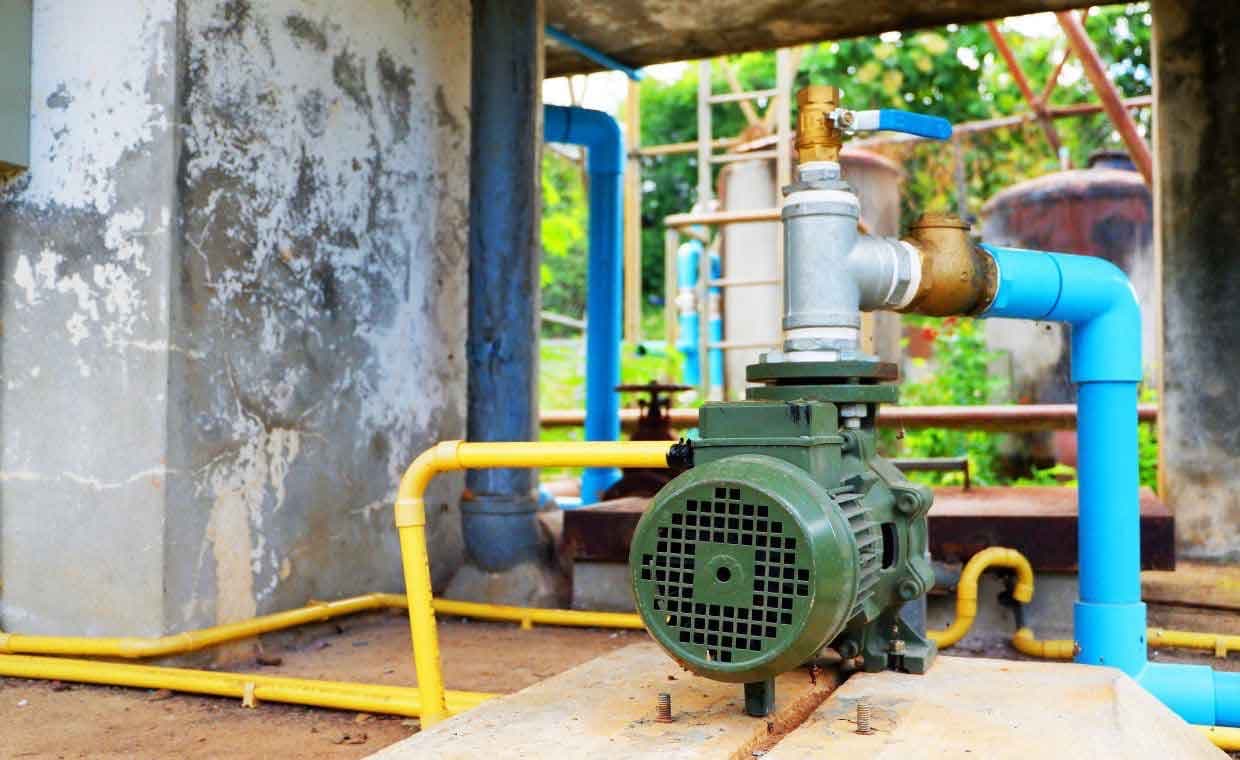
Table of Contents
A domestic water supply system provides a systematic water supply to homes and residential localities. Residents use this water for various purposes, such as drinking, washing clothes, maintaining personal hygiene, cooking, cleaning utensils, gardening, etc. Domestic water supply primarily uses pipelines, valves, storage tanks, and other infrastructure.
Different Types of Domestic Water Supply System
Consistency in water availability is essential in a domestic water supply to meet its objective, such as:
- Delivering safe, healthy water to the consumers.
- Ensuring water is readily available for domestic use.
- Proving adequate provisions for daily chores like cooking, washing, personal hygiene, laundry, and proper maintenance of sewage and sanitation systems.
- Supply clean water to protect consumers from waterborne diseases.
Since a reliable water supply is essential for a healthy and clean lifestyle, a well-functioning domestic water supply system is a key factor in ensuring quality living. Let us first explore the types of domestic water supply systems.
1. Gravity-fed Water Supply System

A gravity-fed water supply system is a traditional method of water distribution that is still practiced in high-altitude areas. This system relies on the force of gravity and the impact of water flow on it. It functions effectively in regions with significant elevation differences, such as hilly or plateau areas, where maintenance of the system is relatively easy. However, the availability of a reliable water source can often be a challenge.
Springs or waterfalls can serve as water sources. However, during summer or winter, the water supply may become inadequate, while in the monsoon season, water quality may be compromised.
Key Components Involved:
The key components of this system include:
- A waterbody or reservoir at an elevated position
- An intake structure, which includes a water collection pot fitted with a filter to remove impurities before channelling
- A pipeline network and storage tank for water distribution.
- Control valves and filters
- A drainage system for overflow control
- Taps or faucets and a pressure regulator
- A cleaning access area.
Advantages:
- Simple infrastructure with the benefit of storing water at the desired temperature.
- Independence from the main pressure in a designated area; Adjustable pressure facility.
- Many modern solar and ground-source heat systems now work with gravity-fed systems, making them energy efficient.
Disadvantages:
- Works best in areas with high elevation.
- Limited control over the water flow rate.
- Seasonal variations affect supply reliability.
2. Domestic Water Supply System with Pump

A water supply system with a pump is a modern method of domestic water distribution. Submersible pumps are commonly used to extract water from underground layers. In this system, a pump draws groundwater, which is then supplied to residences and establishments through pipes.
Key Components Involved:
The components of a water supply system with a pump include:
- Pump
- Valves
- Sensors
- Control mechanisms
- Extraction pipe to draw underground water
- Transmission pipes for water distribution for domestic use.
Advantages:
- Simple distribution structure that is easy and cost-efficient to maintain.
- Continuous water supply from underground, eliminating the need for large storage systems.
- Compatible with water purification system.
- Can be connected to multiple water sources.
Disadvantages:
- Higher energy consumption.
- Reliance on electricity.
- Requires regular maintenance.
- High initial installation cost.
- Disturbance due to noisy pump operation.
3. Water Supply System with Elevated Storage

A storage water tank is the elevated storage option in a water supply system. It is one of the most popular methods of domestic water distribution. The tank is built at a higher elevation to utilise gravity and maintain the required water pressure for a systematic water supply. This elevated storage tank is used in both pumped water systems and gravity-fed water distribution systems, serving as a consistent water source. The tank is also referred to as a water reservoir and is an integral part of a water supply system with a pump.
Key Components Involved:
The components of a water supply system include:
- A main water source for water storage
- A large pipeline for water transmitting water to the elevated storage tank
- A distribution pipeline
- Pumps near the elevated storage tank (optional)
- Control valves
- Overflow and drainage System
- Water treatment unit
- Pressure regulation system.
- Maintenance points.
Advantages:
- Easy to maintain water pressure as per requirement.
- Easy monitoring of water quality and filtering the water stored in the tank.
- The domestic water supply system requires only sporadic uses of pumps, making it a cost-effective solution.
- The system is suitable for all types of consumers.
Disadvantages:
- High initial costs.
- The storage tank requires dedicated space.
- Structural risk is a potential concern.
4. Direct Mode of Water Supply System

The direct mode of water supply is one of the most popular types of water supply systems. It is a simple method that does not need any storage facility for water distribution. Introduced for rural and less populated areas, this system affects underground water levels, and without regular monitoring, the risk of compromised water quality cannot be ruled out.
Key Components Involved:
The components of a direct water supply system include:
- Water source
- Main water distribution pipeline (Water Mains)
- Service connection pipes
- Water meter(optional)
- Control Valves, including non-return valves and stopcock valves
- Pipes and fittings
- Supply points like showers, basins, and appliances requiring water
- Backflow prevention device.
Advantages:
- The system does not require an overhead tank.
- Provides consumers with freshest water.
- Lower maintenance costs, making it suitable for municipal areas.
Disadvantages:
- No provision for a backup supply.
- Not ideal for consumers living in high-rise buildings.
- Water pressure may fluctuate.
- Risk of supply water contamination.
5. Combined System of Water Supply

Courtesy - twadboard
A combined water supply system is an integrated water supply model commonly used in domestic water supply. This system typically combines an elevated storage system with a direct pit system, where water from the storage tank is distributed instead of groundwater.
- The supply and distribution process can be customised.
- Allows monitoring and filtering of the water quality
- Facilitates water pressure adjustment according to community demand
- A combined water supply system ensures a consistent supply system, minimising the risk of shortages
- The system works well for residential houses and high-rise buildings.
- Easy to integrate with individual water filtering systems for better drinking water quality.
Key Components Involved:
A combined water supply system includes:
- Water resource (main water storage)
- Main distribution pipeline
- Service connection pipe
- Water meter (optional)
- Control valves, including stopcock valves, non-return valves, and distribution valves.
- Storage tank at the consumer’s end
- Pump for extracting water to the overhead tank
- Internal pipe system for in-house water distribution
- Backflow prevention service.
Advantages:
- Efficient resource utilization and cost-saving.
- Improved water quality and safety assurance.
- Enhanced reliability during supply disruptions.
- Sustainable water resource management practices.
- Flexible supply and distribution adjustments.
- Reduced infrastructure and maintenance costs.
Disadvantages:
- Requires complex maintenance and monitoring.
- Difficult to detect leaks.
- Compliance with regulatory protocols is a must.
- High initial infrastructure investment.
Sources of Domestic Water Supply
The following sources of water are consumable water resources:
- Surface water sources include rivers, lakes, and natural reservoirs.
- Groundwater sources are wells, boreholes, and freshwater springs.
- Rainwater harvesting is an alternative water source that collects rainwater during the monsoon, which can later be used for domestic supply, irrigation, and other purposes.
- Desalination is a process used in coastal and arid regions to convert saline water into soft water suitable for domestic use. Water treatment plants play a key role in this conversion.
- Municipal water supply is a government-managed distribution system in which water is treated and recycled in water treatment plants to make it safe and consumable.
Water Treatment Process in Domestic Water Supply System

The water treatment process is a critical phase in the domestic water distribution and supply system. It supports water recycling and promotes sustainable water conservation to fight the global challenge of water scarcity. The following processes are used to treat and improve water quality before distribution through the domestic water supply system.
- Filtration: Removes debris and sediments from collected water.
- Disinfection: Water undergoes chlorine and UV treatment to eliminate contaminants and prevent the risk of waterborne diseases.
- Softening and conditioning: Also known as water conditioning, this process removes excess minerals to reduce hardness.
- Fluoridation: The controlled addition of fluoride to drinking water helps prevent tooth decay.
- Desalination techniques: This method removes salt and other impurities from seawater, making it suitable for consumption. Common desalination methods include reverse osmosis, electrodialysis, and thermal distillation.
Also Read: What is the Difference Between RO and UV Water Purifiers?
Challenges in Domestic Water Supply
Maintaining a consistent and reliable domestic water distribution system is becoming increasingly challenging due to various factors. Some recurring problems include:
- Water Scarcity – Rapid urbanisation, groundwater depletion, deforestation, and inefficient water management contribute to global water shortages.
- Contamination Issues – Bacterial contamination from sewage leaks and chemical pollution from industries and agricultural runoff pose severe health risks, leading to waterborne diseases and long-term health concerns.
- Aging Infrastructure – Old, leaky pipelines and incompetent distribution networks cause substantial water losses and reduce overall supply efficiency.
- High Water Demand vs. Supply Capacity – Growing populations and increased water consumption exert pressure on water resources, often exceeding available supply and raising global concerns.
- Climate Change Impact– Unpredictable rainfall, droughts, and extreme weather events like El Nino and La Nina make water supply management increasingly challenging on a global scale.
The Need for Action
Now, it’s time to act to ensure a sustainable future. Simple changes like fixing leaks and using water meticulously in our household can make a significant impact over time. Repairing or replacing old pipes in plumbing system helps maintain water quality. If we act now, we can protect water resources for future generations.
Also Read: The Importance of Water Quality in and Around Your Home
FAQs on the Domestic Water Supply System
1. What is the Domestic Water Supply System?
A domestic water supply system is a network of pipelines, valves, and water sources that ensure a continuous supply of water to households. It includes the water source, water treatment, and distribution system.
2. What are the Five Types of Domestic Water Supply?
The five types of Domestic water supply systems are:
- Gravity-fed water Supply System
- Domestic Water Supply System with a Pump
- Water Supply System with Elevated Storage
- Direct Mode of Water Supply System
- Combined System of Water Supply
3. What is Domestic Water?
Domestic water refers to the water supplied to households for personal use. It can be used for drinking, cooking, washing, gardening, maintaining personal hygiene, sanitation, sewage disposal, and other household tasks.
References
Lal, D. and Singh, S. (2023) in “Impact of El-Nino and La-Nina Episodes on Rainfall Variability and Crop Yield” in International Journal of Environment and Climate Change, 13(10), pp. 2046–2051., doi:10.9734/ijecc/2023/v13i1028650. [online] Available from: Impact of El-Nino and La-Nina Episodes on Rainfall Variability and Crop Yield






























